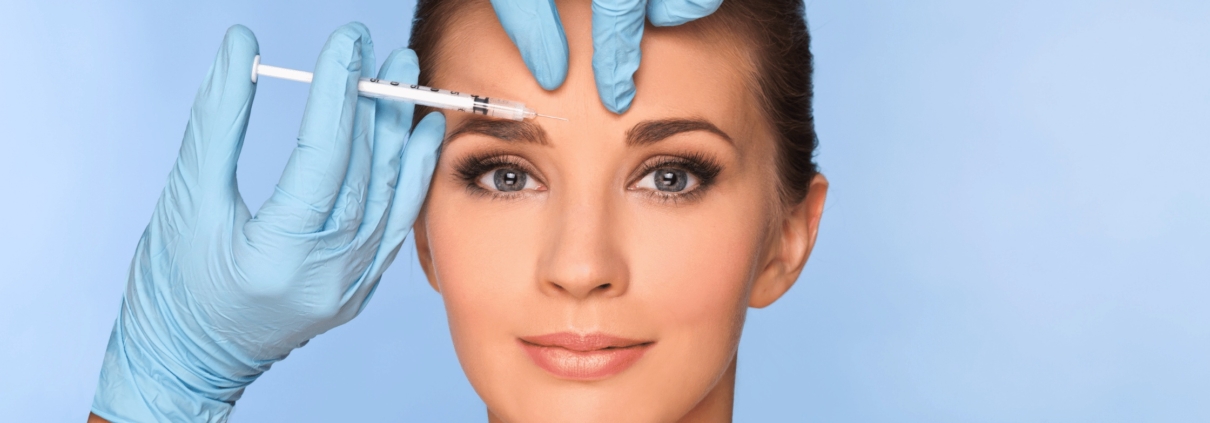Botox 101
Over the last decade, Botox has become a household name. Cosmetic surgeons often get patients who walk in requesting the product by name without necessarily understanding what it is, what it does and how it works.
WHAT IS BOTOX:
Botox is what’s called a neuromodulator or neurotoxin. It is a protein made from botulinum toxin, which is produced by the bacterium known as Clostridium Botulinum. This bacterium is naturally present in a lot of different places including lakes, forests and even soil. Botox is just a version, or brand, of Botulinum toxin. Other brands include Xeomin, Dysport and Jeuveau (Newtox).
WHAT DOES BOTOX DO:
For most patients, Botox is used to smooth out wrinkles or address lines found on the face. Unwanted frown lines, crow’s feet and forehead lines often metastasize as we get older, and Botox is used as a way to treat these lines.
Botox isn’t just used to address wrinkles and fine lines, though. It has been known to help manage acne, alleviate TMJ discomfort, stop migraines and calm excessive sweating (hyperhidrosis). Botox injections may also help prevent chronic migraines.
HOW DOES IT WORK:
Botox injections actually contain a very small amount of botulinum toxin, which allows for the product to temporarily paralyze muscles. Botox injections prevent the release of acetylcholine, causing muscle cells to stop contracting.
Since the main cause of dynamic facial lines is muscle movement and facial expressions (like laughing, squinting, or raising your eyebrows), this temporary paralysis allows the lines to soften. Over time, with repeated injections, the muscles may start to atrophy, allowing the patient to lengthen the time in between Botox appointments, sometimes up to 6 months.
POST APPOINTMENT?
Following your Botox injections, you may experience very minor redness, or swelling in the injection areas. While minimal bruising is always a possibility with injectables. Some patients experience small red bumps following an injection – these typically resolve within 20 to 30 minutes. Some patients develop a headache after Botox treatments, but this is also very rare.
If you seek out a skilled Botox injector, like Doctor Michael Bassiri-Tehrani, you will likely not experience any of these issues.
After your appointment, it is very important the face isn’t aggressively rubbed or massaged. This helps ensure the product stay and spreads in the right place.
HOW LONG DOES IT LAST:
Botox injections generally last about 3-4 months, and up to six months in some cases, especially if the individual is a long-time Botox patient. Of course, these are averages, and in rare cases, effects can last less than three months or longer than six months.
WHAT HAPPENS WHEN BOTOX WEARS OFF:
Once the Botox wears off, the skin returns back to its natural state and muscle movement will return. Discontinuing Botox does not worsen the treated area, meaning the skin should just revert back to what it looked like pre-treatment. Botox doesn’t just linger in the body forever, either. Eventually, it will be destroyed by the body.
IS BOTOX RIGHT FOR YOU?
If you’ve noticed horizontal lines on your forehead, vertical lines between your brows, crow’s feet around your eyes, or “smoker’s lines” around your mouth, Botox may be a great option for you. That said, while Botox is certainly one of the more popular ways to address wrinkles, it isn’t the most appropriate option for everyone. It is always best to consult a professional, like a facial plastic surgeon, before deciding on any kind of cosmetic treatment. As a patient, it’s very important to understand your options.
New York City based cosmetic surgeon, Doctor Michael Bassiri-Tehrani specializes exclusively in the face, nose and neck and is double board-certified in ENT/ Head and Neck Surgery as well as facial plastic and reconstructive surgery.
If you’d like to schedule a consultation with Dr. Bassiri-Tehrani in New York City, please call (212) 339-2001 or email [email protected].




